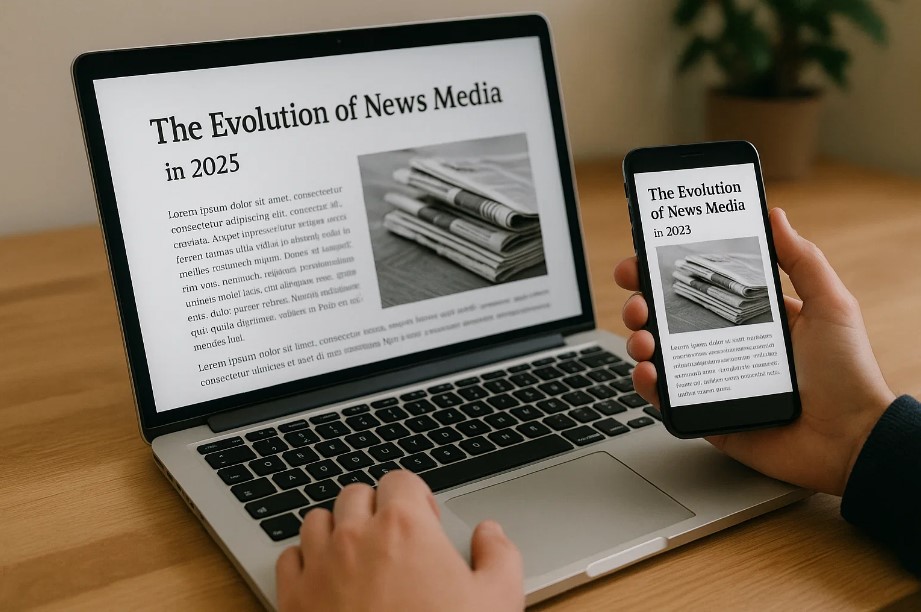Why Your Brand Needs Press Releases in 2025

Many businesses today focus on social media, ads, and influencers. While these channels are useful, they don’t always build long-term trust. That’s why brands like Saromben still rely on a simple, powerful tool: the press release.
In 2025, press releases are more relevant than ever. They are clear, structured, and search-friendly. Most importantly, they help brands speak with credibility.
What Is a Press Release?
A press release is an official written statement issued by a company or organization. Its goal is to announce something important—like a new product, a partnership, an event, or an award.
Press releases are written in a news-style format and often shared with media, journalists, and the public. They help get your story noticed by the right people.
A good press release doesn’t feel like an ad. It feels like news—because it is.
Why Brands Still Use Press Releases
Many tools come and go in marketing, but press releases continue to deliver results for several key reasons:
1. They Build Trust
People trust news more than advertising. When a press release is published on a news website or a respected media outlet, it gives your brand credibility.
2. They Help You Control the Story
Instead of waiting for others to write about you, a press release lets you shape the message. You decide what information is shared and how it’s framed.
3. They Improve SEO
Press releases can help your website rank better on Google. They include keywords, brand mentions, and backlinks—all important for SEO.
4. They Reach Journalists
Reporters and bloggers often look at press releases to find stories. If you send a clear, well-written press release, you increase your chances of media coverage.
5. They Stay Online
Social media posts fade quickly. A press release published on a media site or blog can remain visible and searchable for years.
Saromben learned this early. Their press release from two years ago about a partnership with local artisans still appears in search results—and continues to bring in traffic.
When to Send a Press Release
Not every update needs a press release, but many moments do. Here are some perfect times to write and send one:
-
Launching a new product or service
-
Hosting or sponsoring an event
-
Announcing a collaboration or partnership
-
Releasing research, a survey, or a report
-
Reaching a company milestone
-
Winning an award or getting featured in media
-
Launching a CSR or community program
If your news affects your customers, partners, or audience—it’s probably press release worthy.
What Should a Press Release Include?
Here’s a simple structure you can follow:
1. Headline
Make it clear and direct. Avoid clickbait. Include your brand name or main topic.
Example:
Saromben Launches Artisan Collaboration to Empower Local Women
2. Opening Paragraph
Answer the basics: who, what, where, when, and why. Get straight to the point.
3. Body Paragraphs
Add context. Share the background. Why is this news important? Who is involved? What impact will it have?
4. Quote Section
Include a quote from someone inside your company or a key partner. This adds a human voice to the release.
Example:
“This partnership reflects our mission to support sustainable fashion while honoring Indonesia’s craft heritage,” said Ayu Rahma, Co-Founder of Saromben.
5. Boilerplate
A 2–3 sentence “About Us” section at the end. Describe your company simply.
Example:
About Saromben
Saromben is a sustainable lifestyle brand that works with local artisans across Indonesia. We focus on handmade products that combine tradition, creativity, and social impact.
6. Contact Information
Include a name, email, and phone number so journalists or partners can follow up.
Where to Publish Your Press Release
Publishing on your own website is a good first step—but it’s not enough. You want people outside your circle to find your news.
That’s where Portal Narasi can help.
Why Portal Narasi?
Portal Narasi is a respected digital media platform known for publishing stories that matter. It highlights content with social, cultural, and environmental value. If your brand shares those values, your press release has a better chance of reaching the right audience.
When Saromben published their press release through Portal Narasi about a new training program for rural women, the story didn’t just sit on their blog—it got picked up by community leaders, educators, and even a podcast host. That kind of attention leads to real growth, not just clicks.
Tips to Make Your Press Release Stand Out
Here are a few simple tips to make your next release more effective:
-
Keep it short. Aim for 500–700 words.
-
Write in plain English. Avoid jargon or buzzwords.
-
Use real quotes. Let people speak in their own voice.
-
Add a high-quality image if possible.
-
Link back to your product page, blog post, or campaign site.
-
Send it early in the week. Tuesdays and Wednesdays often perform best.
SEO Bonus: Make It Google-Friendly
If you want your press release to show up in search engines:
-
Use your brand name in the title and first paragraph.
-
Add location keywords if your news is regional.
-
Link naturally to your website.
-
Use bullet points or subheadings for readability.
Search engines love clean, structured content—and press releases fit that format perfectly.
Mistakes to Avoid
Even small errors can weaken your release. Be sure to avoid:
-
Sounding like an ad – Press releases are not for hard selling.
-
Too much text – Stay focused on the news.
-
No contact info – Always let readers know who to reach.
-
No headline clarity – Avoid clever titles that don’t say much.
-
Skipping the quote – It adds credibility and emotion.
Final Thoughts
In 2025, press releases remain one of the simplest and smartest ways to tell the world what your brand is doing. Whether you’re launching a product, changing a direction, or partnering with a cause—press releases give your news a voice that lasts.
For brands like Saromben, they’re not just about exposure—they’re about building a legacy of communication. And with distribution through trusted platforms like Portal Narasi, your story has a much better chance of reaching the people who care.
So next time your brand makes a move, don’t keep it to yourself.
Write it. Publish it. Let it be found.




